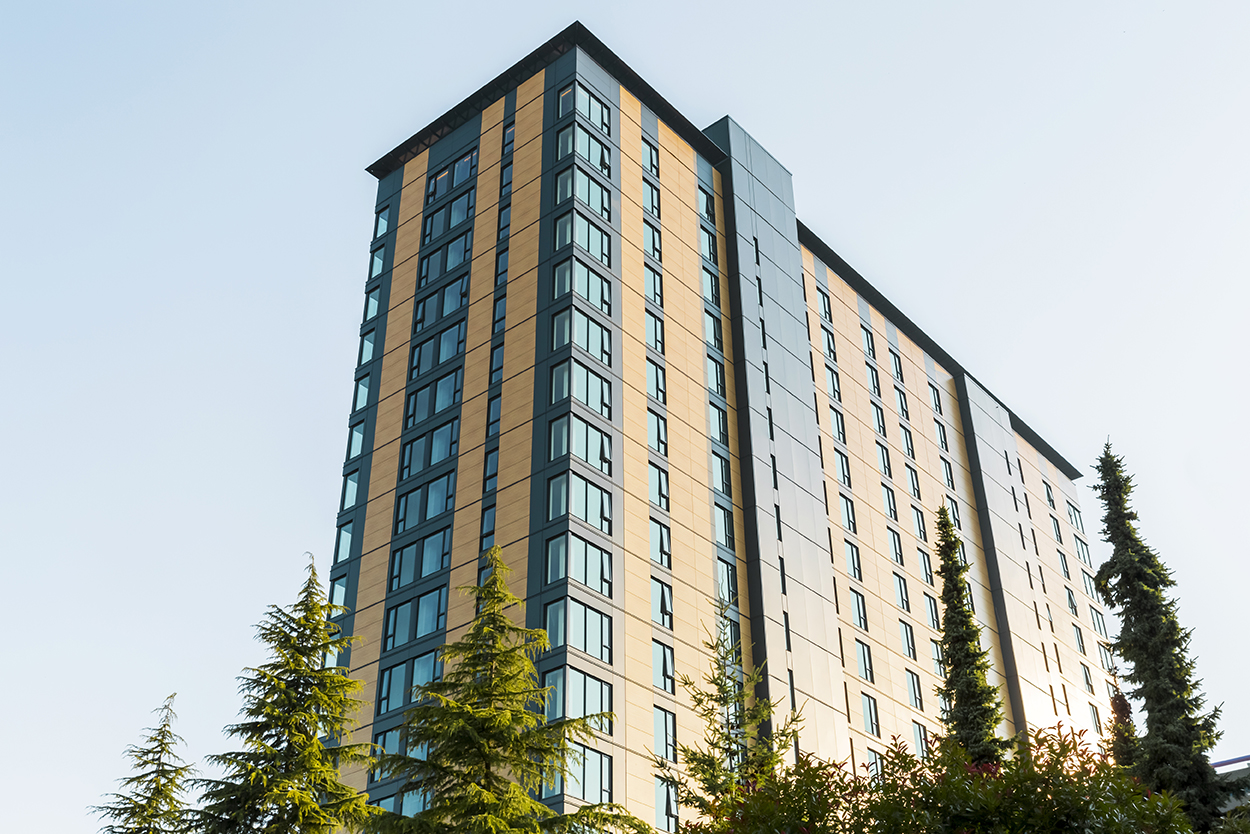
College students at the University of British Columbia are making history this fall as the first residents of Brock Commons, an 18-story dormitory made of cross-laminated timber.
Called Tallwood House, the student residence currently holds the title as the tallest mass timber building in the world. Four-hundred UBC students are its first occupants, mostly upperclassmen and graduate students.
The building offers 33 four-bedroom suites and 272 studio apartments, renting for $924 to $1,116.51 per month.
Among those hailing the move-in earlier this month was Treehugger, which hailed Tallwood House as an environmental and safety marvel.
Not only does the building store carbon, Treehugger reporter Lloyd Alter said, but it doubled-down on fire safety to ease concerns about a high-rise wood building filled with college students.
Here’s Alter’s explanation:
“In the case of Brock Commons, a special regulation was developed, and a serious belt-and-suspenders approach to fire safety was used. Acton Ostry Architects worked with a team of consultants to rewrite the book on fire safety.
“The building is described as a hybrid, because the stair and elevator cores are poured concrete, providing a completely noncombustible means of exit. Then every bit of wood (except in a lounge on the top floor) is encased in layers of fire-rated drywall to provide a minimum two-hour fire rating between floors and between units.
“The suites are not very large, so that creates a lot of fire-separated compartments on every floor. Things that might go boom, like the mechanical and electrical services, are all kept within the concrete ground floor.
“Then there is a sprinkler system with backup pumps, standpipes and a water curtain on the big ground floor exterior glazed panels. Because the building is in an earthquake zone, there is a 5,283 US gallon tank of water that can run the sprinklers for 30 minutes if the municipal water supply is cut off. They even use recessed pop-out sprinkler heads that are flush with the ceiling so that those pesky students won’t knock them off.”
This is all on top of extensive testing in Canada and the United States showing that CLT can pass the two-hour fire-safety test without the use of specially treated drywall or concrete stairwells.
The thick layers of CLT char on the outside, creating a “black zone” and insulating the inner layers from the fire.
“This has been known for hundreds of years, which is why heavy timber buildings were designed with larger members than were just needed for structural reasons. CLT works the same way,” Alter wrote.
Here’s a look at our earlier Treesource story about Brock Commons, as well as a link to Alter’s full report on Treehugger.
By all accounts, UBC students are enjoying life – and making history – in their new dormitory. We’ll keep you posted as the semester progresses.


[…] SHERRY DEVLIN – TREESOURCE · Image by MARCUS KAUFFMAN / OREGON DEPARTMENT OF […]